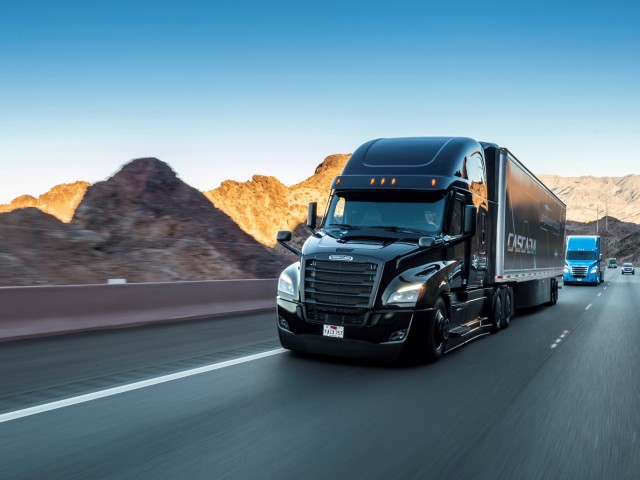Daimler Trucks announced that it will invest EUR 500 million over the next few years and create more than 200 new jobs in its global push to bring highly automated trucks (SAE level 4) to the road within a decade.
Highly automated driving is characterized as automated travel in defined areas and between defined hubs without any expectation of the system that a user will respond to a request to intervene.
In commercial trucking, level 4 is the natural next step after level 2, increasing efficiency and productivity for customers, cutting costs per mile significantly.
In doing so, Daimler Trucks is skipping the intermediate step of conditionally automated driving (level 3). Level 3 automated driving does not offer truck customers a substantial advantage compared to the current situation as there are no corresponding benefits to compensate for the technology costs.
The new Freightliner Cascadia offers partially automated driving features (level 2), making it the first-ever partially automated series production truck on North American roads. It also made its world premiere during this year’s presentation of Daimler Trucks at CES.
Daimler Trucks has been a pioneer of automated truck development for years. In 2014, the company presented the Mercedes-Benz Future Truck 2025, the world’s first automated truck, and was the first to demonstrate the technological opportunities and great potential that automated trucks have for the economy and society.
Martin Daum, Member of the Board of Management of Daimler AG with responsibility for Daimler Trucks & Buses said, “As a leader of our industry, we’ve been pioneering automated trucking. In 2015, our Freightliner Inspiration Truck got the first road license ever for an automated commercial vehicle. Now we take automated trucking to the next level: we’re ready to launch the first partially automated new Freightliner Cascadia in 2019 – and next, we tackle highly automated trucks. Highly automated trucks will improve safety, boost the performance of logistics and offer a great value proposition to our customers – and thus contribute considerably to a sustainable future of transportation.”




